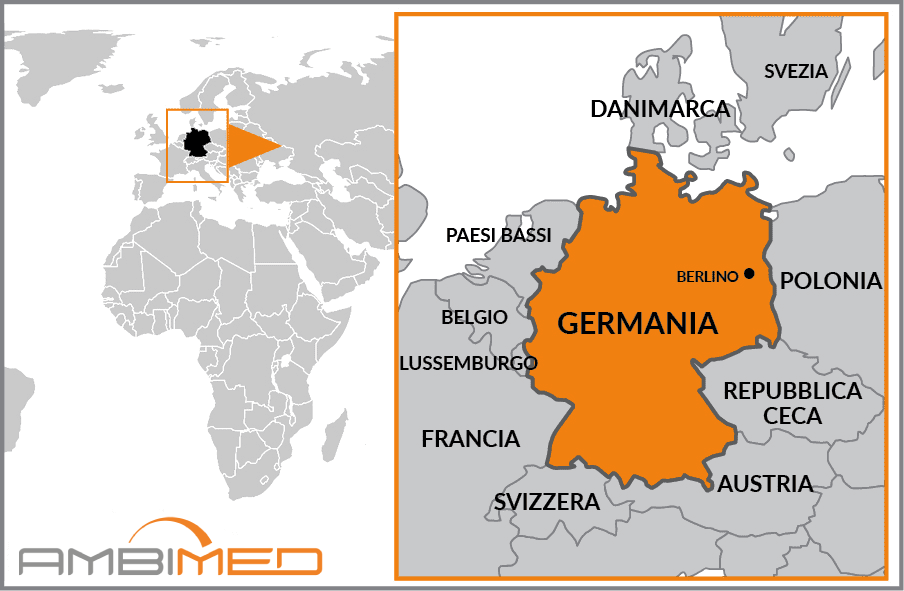Ambimed-Group
Travel Medicine
Business Travel Medicine
Easily manage your reservations and stay constantly updated on Ambimed services.

|
Country Name |
Federal Republic of Germany |
|
Continent |
Europe |
|
Surface area |
357,030 km2 |
|
Capital |
Berlin |
|
Population |
80.5 million |
|
Language |
German |
|
Currency |
Euro (EUR) |
|
Time zone |
The same as Italy |
|
Area code for Italy |
0039 |
|
Area code from Italy |
0049 |
Yellow fever vaccination is not required.
This viral disease is transmitted by the bite of infected ticks. Vaccination is recommended when staying in areas with a higher risk of infection. The risk decreases in the winter months.
Infection typically occurs through contact with the saliva of an infected animal, usually caused by bites, scratches or licks near open wounds or mucous membranes (e.g. mouth, nose, eyes). The most common vectors are dogs and bats, but cases of infection in other domestic animals have also been reported.
Caused by toxins released by the bacterium Clostridium tetani, the risk of tetanus infection is present throughout the country.
Diseases such as West Nile virus are present in Western Europe. As this disease is transmitted by insect bites and there is no vaccine, it is important to adopt careful behavioural and preventive measures.
The following vaccinations are strongly recommended as these diseases can be contracted anywhere in the world. Experts advise that you protect yourself and other travellers by making sure you are up-to-date with all of the recommended vaccinations. This will allow you to travel safely, while minimising the risk of exposure to infection.
Germany borders several European countries: Denmark to the north; Poland and the Czech Republic to the east; Austria to the south and southeast; France, Switzerland, Belgium, and Luxembourg to the west and southwest, and the Netherlands to the northwest. The landmass also overlooks the North Sea and the Baltic Sea to the north.
The climatic regions are diverse and vary from oceanic to continental due to the influence of the Russian Plain.
Naturally, the oceanic influence tempers the winter weather leading to a gradual decrease in temperatures from west to east. Moving in the same direction, the rainfall also gradually diminishes, although the area is often covered in a thin but enduring layer of snow in winter, due to the low temperatures.
The coastal climate is milder and rainier towards the North Sea than it is over the Baltic Sea.